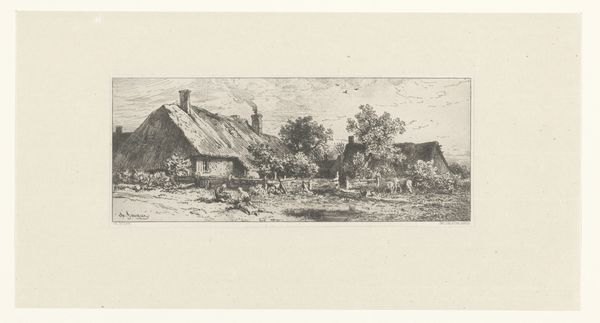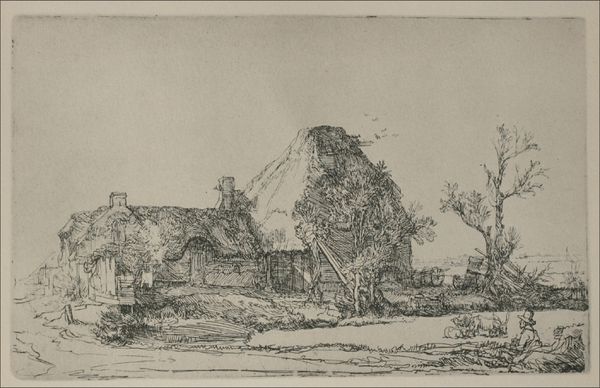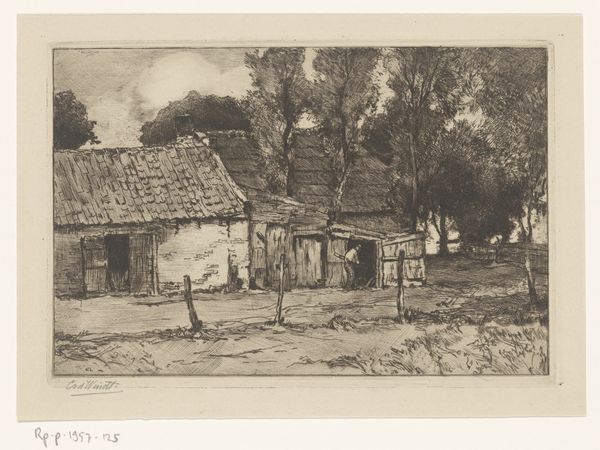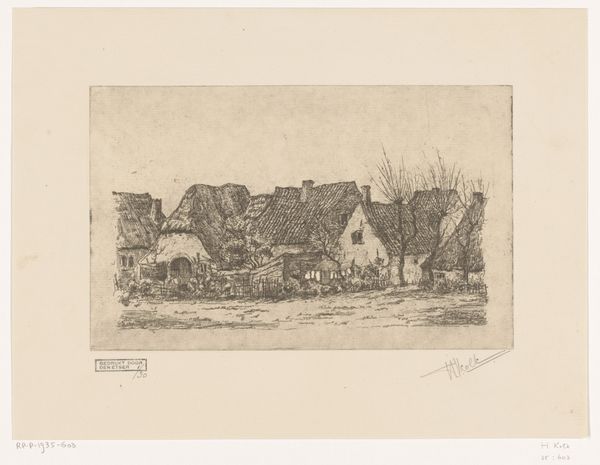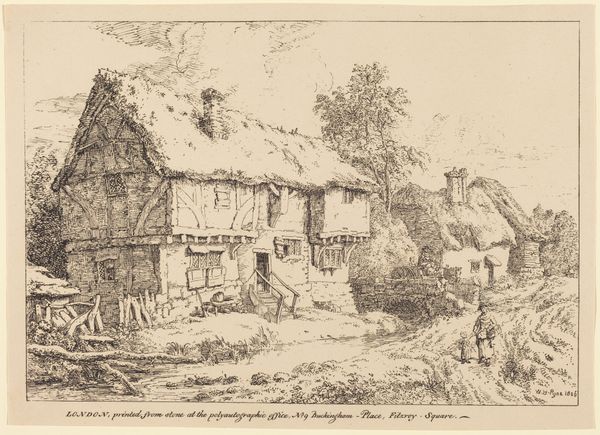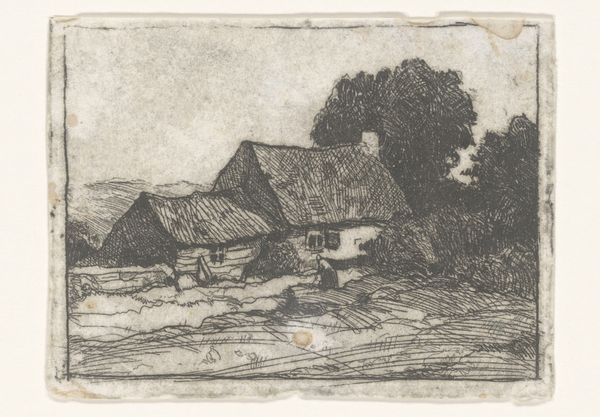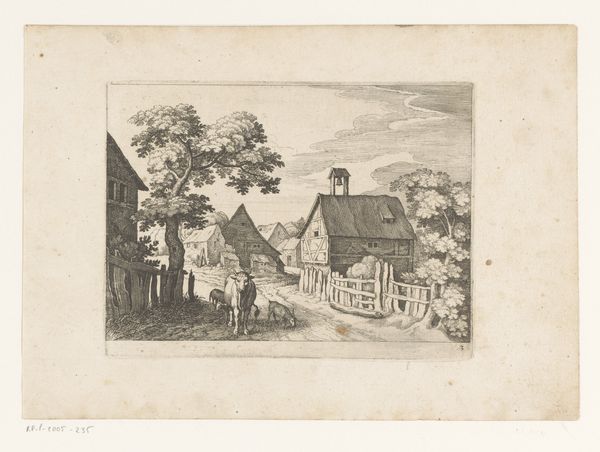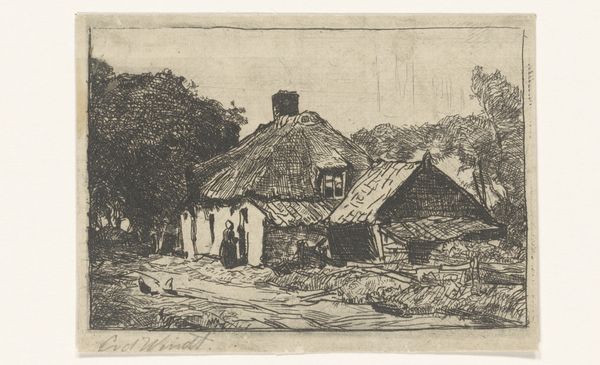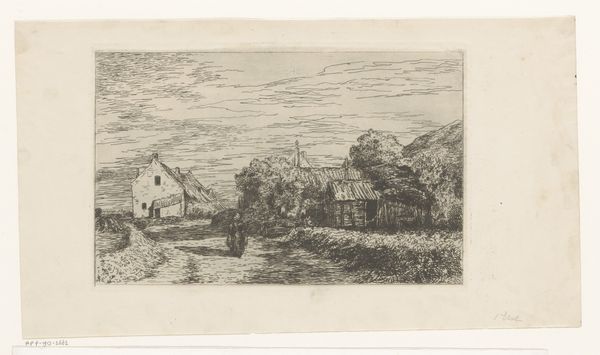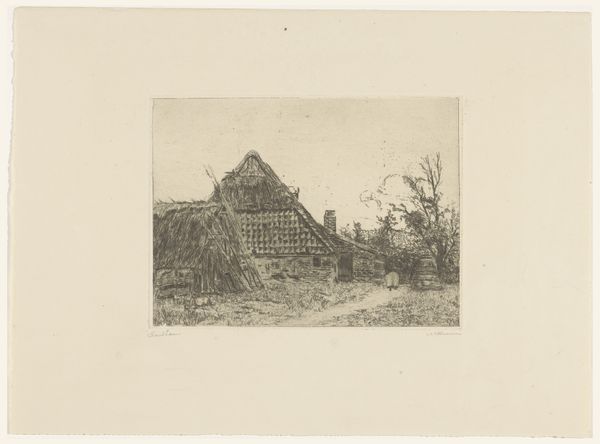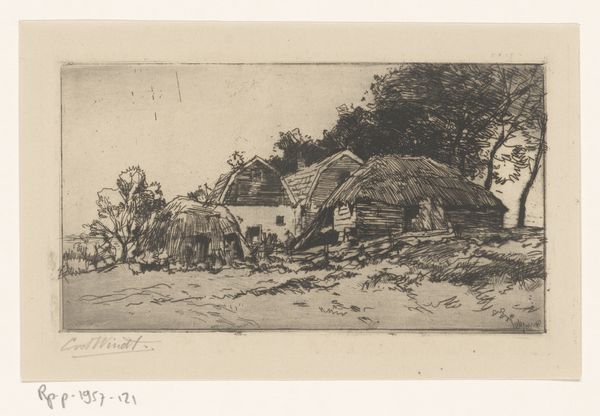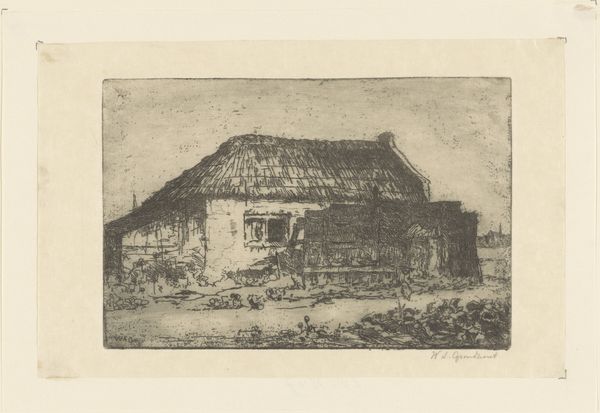
print, etching
# print
#
etching
#
landscape
#
realism
Dimensions: height 298 mm, width 360 mm
Copyright: Rijks Museum: Open Domain
Editor: This etching, "Two Children by a Dilapidated House," created by Auguste Brouet sometime between 1882 and 1922, is so evocative. It almost feels like looking at a memory. What images or stories does it bring to mind for you? Curator: I see a potent symbol of fragility and resilience. The dilapidated house, rendered with such detailed etching, speaks to the ephemeral nature of human constructs. Yet, right in front of it, we have these children. Doesn't their presence suggest a certain continuity, an unbroken link to the future? Editor: That’s an interesting point about continuity. The house, though crumbling, is still there. It offers some sort of…backdrop to their lives? Curator: Exactly! Think of houses as cultural containers; the etching almost reads like an unearthed memory from our collective past. Their presence near it highlights the human spirit's enduring capacity to create a home and build a life, regardless of surroundings. What do you make of the subdued tonality, the almost sepia-like quality of the print? Editor: It amplifies that sense of nostalgia and also melancholy. It also draws your eye toward those contrasts between the house and children. Curator: Precisely! Consider also how our understanding of 'home' evolves. In that context, 'dilapidation' stops being purely negative. It is merely change, evolution—something children instinctively grasp and live with. Editor: I never considered that. Thanks, that really makes me look at this piece in a completely new light. Curator: My pleasure! This is what makes this image compelling; a beautiful reminder that meaning and memory are fluid, always in dialogue with one another.
Comments
No comments
Be the first to comment and join the conversation on the ultimate creative platform.
